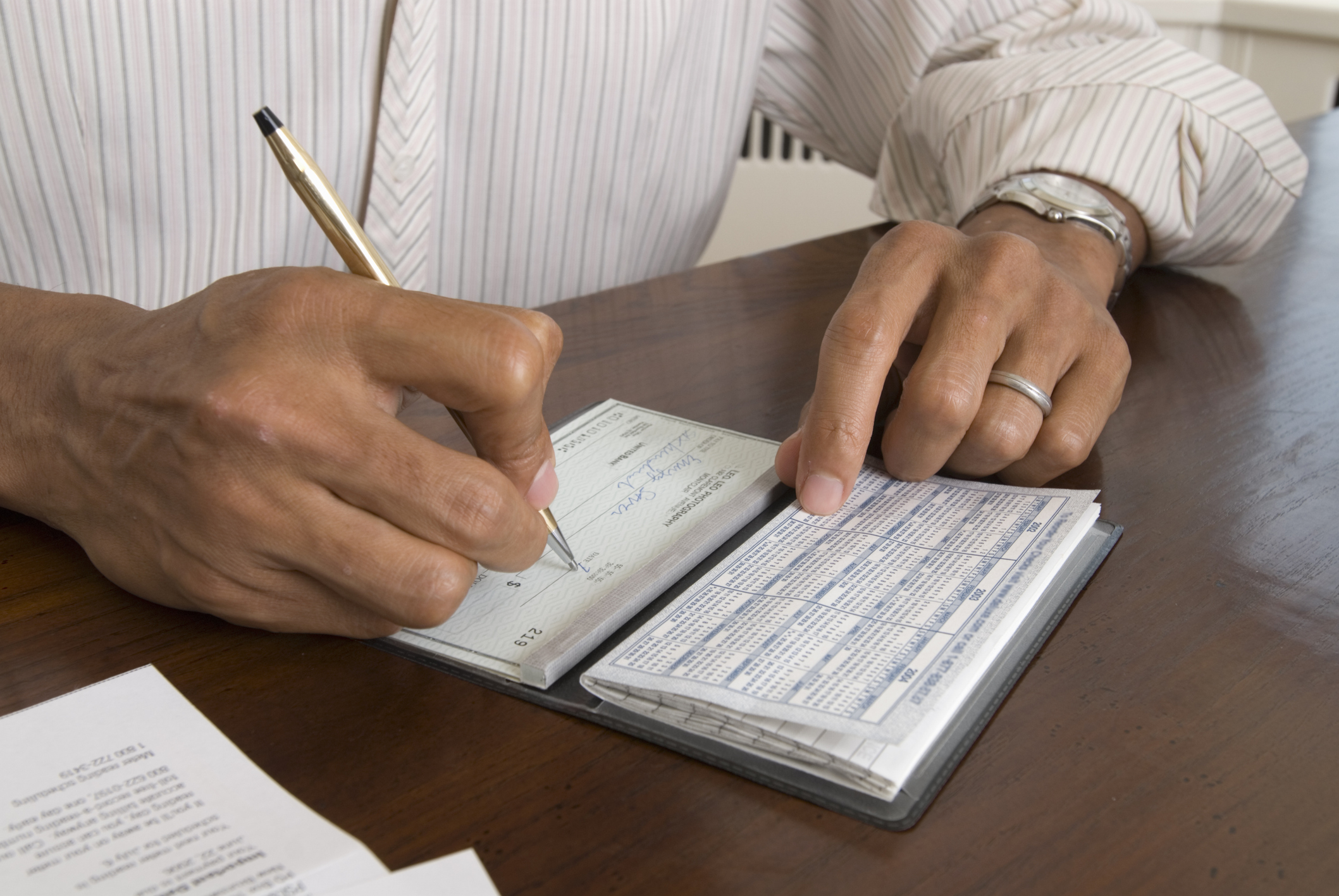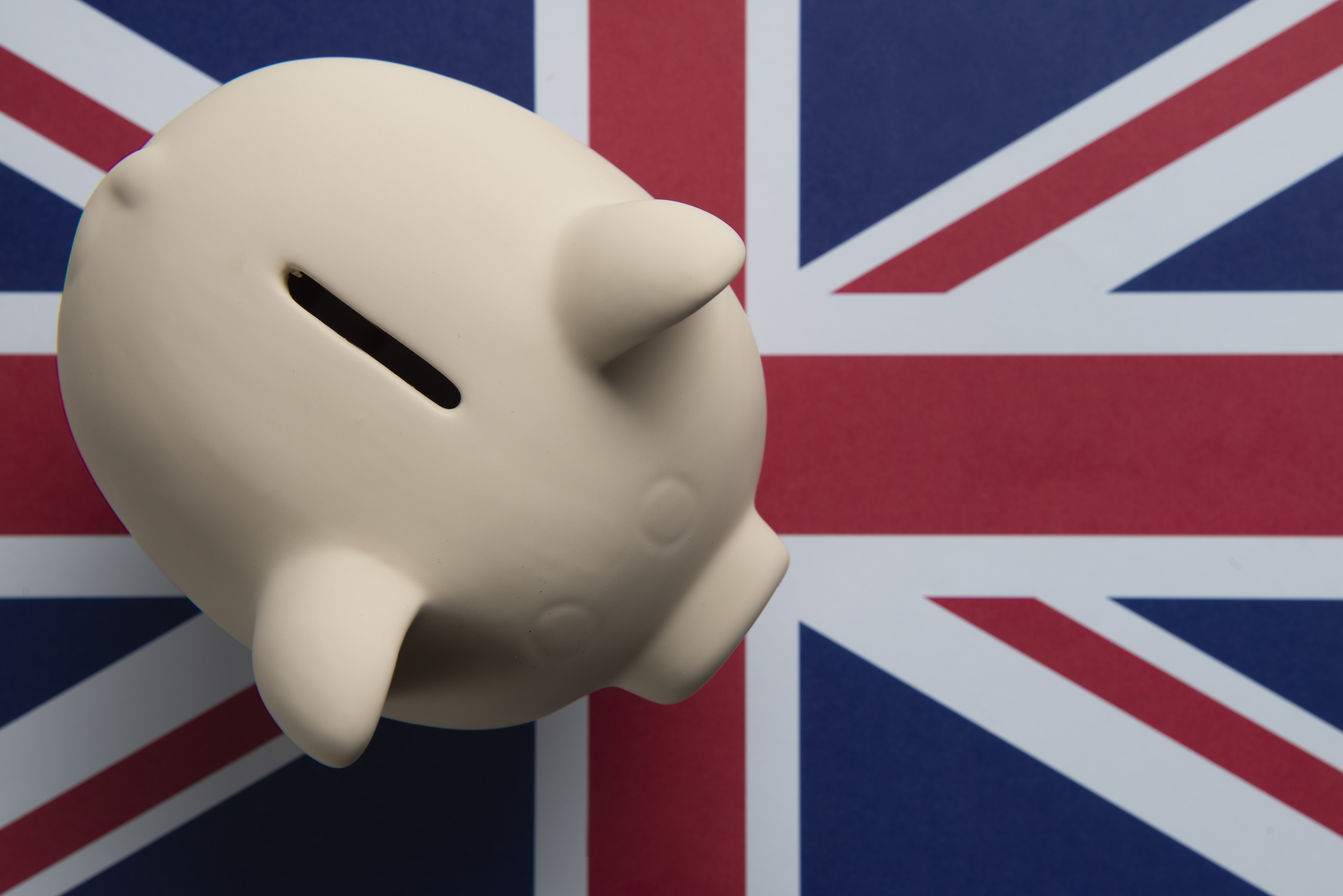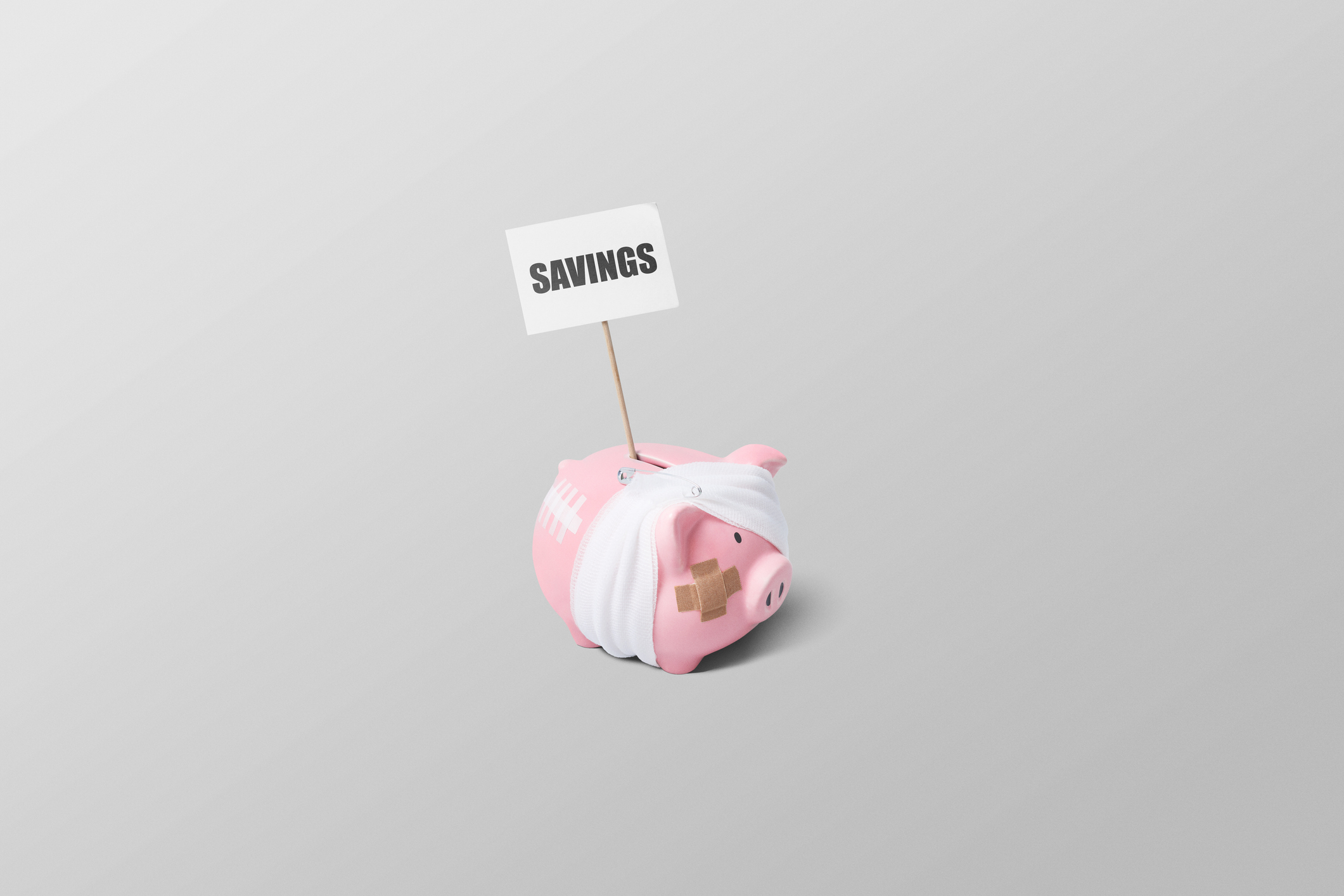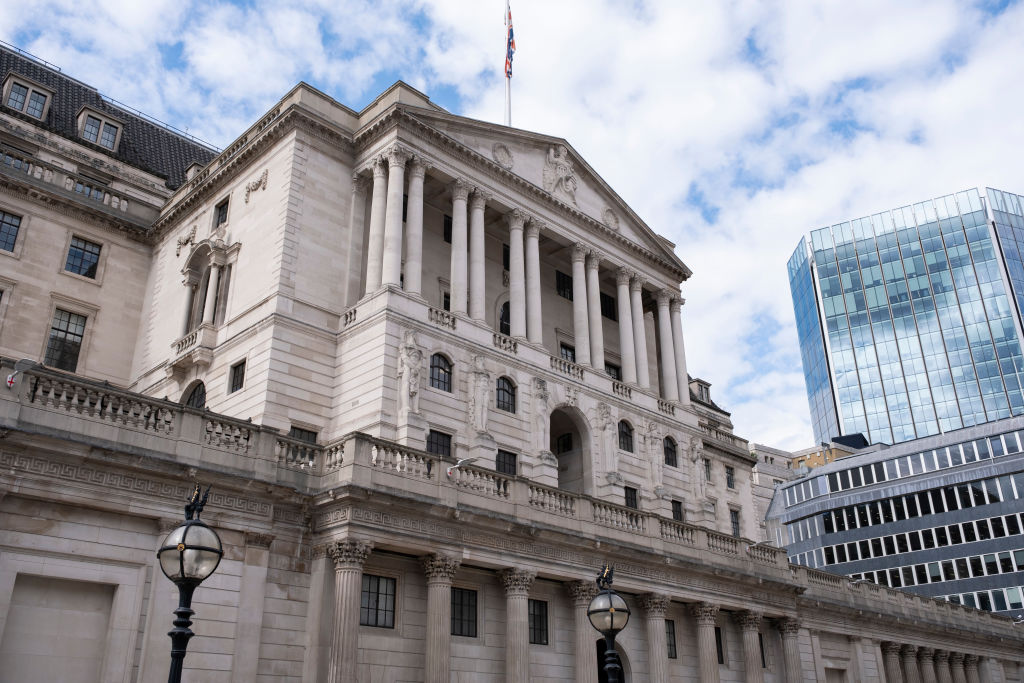How to pay in a cheque
Receiving or writing a cheque has become much less common in recent years as instant bank transfers have grown in popularity. Amid widespread bank branch closures, we explain what to do if you get a cheque, and how you can pay one into your bank account.


Once a staple of everyday banking for Brits, cheques have steadily fallen out of vogue as consumers increasingly turn to online banking.
According to the latest data from trade body UK Finance , just 0.2% of all payments made in the UK in 2023 were by cheque – an 85% decrease over just ten years.
Many banks don’t even provide you with a chequebook when you open your account these days, unless you specifically ask them for one, and some people don’t know what to do with cheques.
MoneyWeek
Subscribe to MoneyWeek today and get your first six magazine issues absolutely FREE

Sign up to Money Morning
Don't miss the latest investment and personal finances news, market analysis, plus money-saving tips with our free twice-daily newsletter
Don't miss the latest investment and personal finances news, market analysis, plus money-saving tips with our free twice-daily newsletter
They might be less popular, but you may occasionally find yourself in receipt of a cheque.
We look at what you should do if you get a cheque, whether they are still valid in the UK, and if they are safe.
Are cheques still valid?
Despite not being used as often today, you can still transfer money using a cheque as a valid means of payment. This does not mean, however, that all cheques are valid all the time.
In the UK, businesses have the legal right to refuse payments of any kind (including by cheque) and only take payment in whatever form they find convenient.
So while some vendors may accept a cheque as a valid form of payment, not all of them will.
If you want to pay for something using a cheque, it is best to check with the vendor and see if they are accepted.
Do cheques have a time limit?
While cheques do not have a specific expiry date, many banks do often reject a cheque if you try to cash it in more than six months after it was issued.
The best way to find out if your cheque is still valid is by checking with the bank.
For example, NatWest, Nationwide and Lloyds reserve the right not to process a cheque that is older than six months.
All these banks advise that if you have a cheque that you wish to cash in more than six months after it was issued, you should contact the issuer of that cheque and ask for a replacement.
How to pay in a cheque
Most banks give you a few options for you to pay in your cheque. Bear in mind, however, that different banks have different rules so it is best to check with them first.
We run through some of the common ways you can pay in a cheque.
In branch
One of the reasons cheques have become less popular is that they are becoming more difficult to pay in as more physical bank branches close.
Lloyds Banking Groups will have closed almost 300 physical locations by the end of 2026 – this includes branches of Lloyds Bank, Halifax, and Bank of Scotland. Meanwhile, Santander announced 95 bank branch closures earlier this year, as it reduces its network to just 349 branches.
However, if you use a bank that has a branch close to where you live, you can still pay your cheque in physically.
This is typically done by going up to the counter and giving the clerk your cheque, though some banks also have cash machines in their branches that can take your cheque.
Some banks also allow you to pay in your cheque at a participating Post Office.
By post
Some, but not all, banks also allow you to pay in your cheque by post.
This can often be done by filling out a form with your details then sending it and your cheque to an address specified by your bank.
By app
While you used to only be able to pay in a cheque at a bank branch, most of the UK’s large banks now allow cheques to be cashed by banking app.
Not all of them do, however. For example, Nationwide Building Society doesn’t allow this.
If your bank does let you cash a cheque via its app, you will likely need to take a photo of both sides of the cheque using your phone, review the details, and then submit it.
A spokesperson at Lloyds told MoneyWeek: “For Lloyds customers who need to pay in a cheque we make it simple. Using our app, customers can take a photo on their phone and you can find a video showing how easy it is to do this here.
“Customers can also visit a branch or use our immediate deposit machines to pay in a cheque. For customers who need extra support they can talk to us about our options for postal cheques.”
We list some of the UK’s largest banks and explain how you can pay in a cheque with them.
Bank | In branch | By post | At the Post Office | App |
|---|---|---|---|---|
Lloyds Bank | Yes | Yes | Yes (until 31 December 2025) | Yes |
NatWest | Yes | Yes | Yes | Yes |
HSBC | Yes | Yes | Yes | Yes |
Barclays | Yes | Yes | Yes | Yes |
Nationwide Building Society | Yes | Yes | No | No |
Metro | Yes | Yes | Yes | No |
Halifax | Yes | Yes | Yes (until 31 December 2025) | Yes |
Santander | Yes | Yes | Yes | Yes |
Virgin Money | Yes | Yes | Yes | Yes |
TSB | Yes | Yes | Yes | Yes |
The Co-Op Bank | Yes | Yes | Yes | No |
Are cheques safe?
Sending a cheque in the post is safer than including cash in the envelope, but that does not mean that cheques are perfectly safe in all other circumstances.
Like all forms of bank transfer, there are ways that criminals can defraud you by forging a cheque from your account.
To minimise your risk of being a victim of cheque fraud, banks recommend that when you write out a cheque, you draw a line through all unused space and that you keep your cheques in a secure place.
Are cheques legal tender?
Cheques are not considered legal tender. This is because the term ‘legal tender’ has a very narrow technical meaning that does not come up in everyday life.
According to the Bank of England, it means that if you offer to pay off a debt to someone using what is considered legal tender (and you have not agreed to pay in another way), you cannot be sued for failing to repay the debt.
The only forms of payment that are considered ‘legal tender’ in England and Wales are Bank of England notes, Royal Mint coins, and £1 and £2 coins.
Smaller coins are also legal tender, but only up to a certain amount – 1p and 2p coins for any amount up to 20p, and 5p and 10p coins only count for any amount up to £5.
Old £20 and £50 paper notes are no longer legal tender after they were replaced with the new plastic notes. We explain how to exchange old notes and coins in a separate article.
Get the latest financial news, insights and expert analysis from our award-winning MoneyWeek team, to help you understand what really matters when it comes to your finances.
Daniel is a financial journalist at MoneyWeek, writing about personal finance, economics, property, politics, and investing.
He is passionate about translating political news and economic data into simple English, and explaining what it means for your wallet.
Daniel joined MoneyWeek in January 2025. He previously worked at The Economist in their Audience team and read history at Emmanuel College, Cambridge, specialising in the history of political thought.
In his free time, he likes reading, walking around Hampstead Heath, and cooking overambitious meals.
-
 Boost for over 100,000 families on Child Benefit as new HMRC payment system rolled out
Boost for over 100,000 families on Child Benefit as new HMRC payment system rolled outThousands of households will no longer have to pay the dreaded High Income Child Benefit Charge through self-assessment
-
 Are you being haunted by the ghost of Christmas past? How festive cutbacks could boost your long-term wealth
Are you being haunted by the ghost of Christmas past? How festive cutbacks could boost your long-term wealthThe average family spends around £1,000 over the Christmas season. Here’s how much you could have gained if you had invested some of the money instead.
-
 Brits leave £31.6 billion in savings accounts paying 1% interest or less – do you need to switch?
Brits leave £31.6 billion in savings accounts paying 1% interest or less – do you need to switch?Eight million Brits hold money in savings accounts that pay 1% interest or less, meaning the value of their cash is being eroded by inflation.
-
 Buying vs renting: is is better to own or rent your home?
Buying vs renting: is is better to own or rent your home?The higher mortgage rates of recent years have actually made renting comparatively cheaper, analysis suggests. But there are hidden costs to long term renting.
-
 Hargreaves Lansdown launches first cash ISA – how does it compare?
Hargreaves Lansdown launches first cash ISA – how does it compare?Hargreaves Lansdown is offering an own brand cash ISA for the first time with their new easy-access account. How does the interest rate compare to other products?
-
 Is Britain heading for a big debt crisis?
Is Britain heading for a big debt crisis?Opinion Things are not yet as bad as some reports have claimed. But they sure aren’t rosy either, says Julian Jessop
-
 ‘My NS&I one-year British Savings Bond is maturing – what should I do with my savings?
‘My NS&I one-year British Savings Bond is maturing – what should I do with my savings?Thousands of savers will see their fixed-rate savings accounts mature next month. We consider whether you should stick with NS&I or move to a competitor
-
 ‘Current account coasters’ are leaving billions of pounds languishing in low interest accounts
‘Current account coasters’ are leaving billions of pounds languishing in low interest accountsThe average saver with £10,000 or more in their zero interest current account is missing out on over £1,500 in potential interest payments, new research has revealed.
-
 Best inflation-beating savings accounts to make your money work hard
Best inflation-beating savings accounts to make your money work hardWe explore the savings accounts that can best protect your money from inflation
-
 Bank of England holds interest rates at 5.25% again
Bank of England holds interest rates at 5.25% againInterest rates have been frozen at 5.25% for seven meetings in a row. Here is what it means for your money. Plus, when will interest rates finally be cut?
